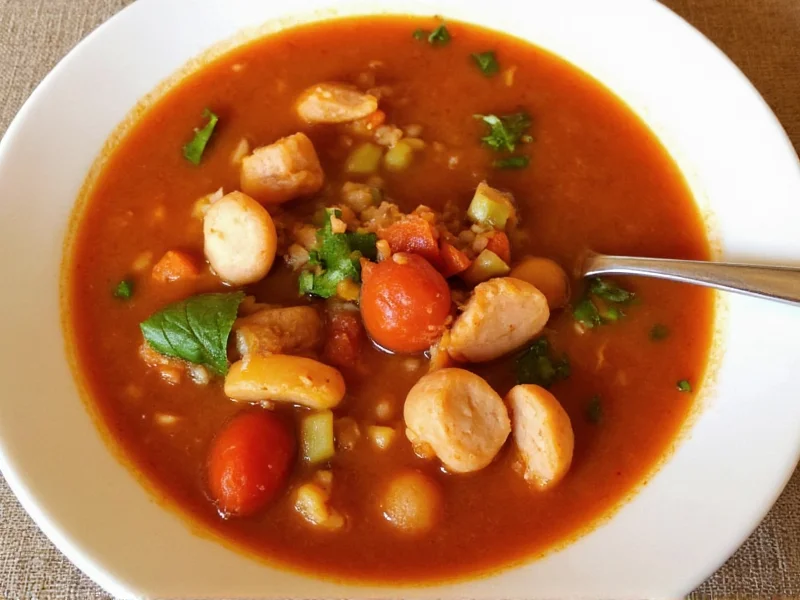Minestrone isn’t just soup—it’s Italy’s edible history. Born from cucina povera (the “uisine of the poor”), this vegetable soup transformed humble pantry staples into nourishing meals across generations. Unlike Americanized versions loaded with excessive pasta or meat, authentic minestrone celebrates seasonal produce and regional traditions. Northern Italy might feature borlotti beans and rice, while Tuscany adds cavolo nero (Tuscan kale). Understanding these nuances separates a genuine traditional Italian minestrone soup recipe from generic imitations.
The Essence of Authenticity: What Makes Minestrone Truly Italian
Authentic minestrone defies rigid recipes. Its soul lies in flexibility—using what’s ripe and available. However, certain elements consistently define how to make authentic minestrone soup from Italy:
- No meat as foundation: While some versions include pancetta for flavor, meat never dominates. The focus remains on vegetables and legumes.
- Seasonal rotation: Spring features asparagus and peas; summer brings tomatoes and zucchini; fall includes beans and squash; winter relies on root vegetables and cabbage.
- Parmesan rind: A secret weapon adding umami depth without overpowering.
- Soffritto base: The holy trinity of onion, carrot, and celery sautéed in olive oil.
- Tomato element: Either fresh in season or quality canned tomatoes off-season.
These principles guide regional variations of minestrone soup in Italy. In Liguria, pesto swirls through the broth; Emilia-Romagna adds leftover tortellini; Sicily incorporates eggplant. This adaptability is minestrone’s authentic signature.
Essential Ingredients for Traditional Minestrone
While ingredients change with seasons, these components form the backbone of any Italian minestrone soup without meat recipe:
| Category | Authentic Ingredients | Americanized Substitutes to Avoid |
|---|---|---|
| Base | Onion, carrot, celery (soffritto), garlic | Onion powder, celery salt |
| Beans | Cannellini, borlotti, or chickpeas (dried, soaked) | Canned beans with preservatives |
| Vegetables | Seasonal produce (6-8 varieties) | Frozen mixed vegetables |
| Grain | Rice, small pasta (ditalini), or farro | Large pasta shapes, instant rice |
| Flavor Boosters | Parmesan rind, tomato passata, fresh herbs | Pre-made broth cubes, dried herb blends |
Dried beans soaked overnight outperform canned versions in texture and flavor control. The proper technique for making minestrone soup involves adding vegetables in stages based on cooking times—hard vegetables first, delicate greens last.
Step-by-Step Preparation: Crafting Authentic Minestrone
Follow this method for authentic minestrone soup cooking time and technique that honors Italian tradition:
- Prepare soffritto: Finely dice 1 onion, 1 carrot, and 2 celery stalks. Sauté in 3 tbsp olive oil over medium heat until translucent (8-10 minutes). Add 2 garlic cloves, minced.
- Add tomatoes: Stir in 1 cup tomato passata or crushed San Marzano tomatoes. Cook 5 minutes until oil separates slightly.
- Build broth: Add 6 cups water or light vegetable broth. Include Parmesan rind and 1 bay leaf. Bring to gentle simmer.
- Layer vegetables: Add hard vegetables first (potatoes, carrots, celery root) and dried beans. Simmer 20 minutes.
- Medium vegetables: Add zucchini, green beans, cabbage. Simmer 15 minutes.
- Delicate ingredients: Stir in tomatoes, leafy greens, and small pasta or rice. Cook 10-12 minutes until al dente.
- Finish: Remove bay leaf and Parmesan rind. Stir in 2 tbsp pesto (optional). Season with salt, pepper, and fresh basil.
The entire authentic minestrone soup cooking time spans 45-60 minutes—slow enough for flavors to meld, but not so long that vegetables disintegrate. Unlike rushed versions, authentic minestrone develops complexity through patient layering.
Avoiding Common Mistakes in Minestrone Preparation
Even experienced cooks make these errors when attempting what makes minestrone soup authentic:
- Overloading pasta: Authentic versions use modest grain quantities (1/2 cup per 6 servings). Excessive pasta turns soup into a starchy stew.
- Adding all vegetables at once: Different vegetables require different cooking times to maintain texture.
- Using low-quality canned tomatoes: Opt for DOP-certified San Marzano tomatoes for authentic flavor.
- Skipping the Parmesan rind: This traditional umami booster transforms the broth without meat.
- Over-seasoning early: Salt intensifies as soup reduces—season gradually throughout cooking.
Serving Traditions and Storage Tips
In Italy, minestrone serves as a complete meal. Follow these traditional minestrone soup serving suggestions:
- Serving temperature: Always hot, never piping hot—Italian soups are served at comfortable eating temperature.
- Garnish: Freshly grated Parmigiano-Reggiano and extra virgin olive oil drizzle.
- Accompaniments: Crusty bread for dipping, never served with crackers.
- Portion size: In Northern Italy, minestrone often serves as the primo (first course), while Southern regions treat it as a full meal.
For minestrone soup storage and reheating tips, remember:
- Cool completely before refrigerating (max 3-4 days)
- Freeze without pasta/rice (add fresh when reheating)
- Reheat gently over medium-low heat, adding water if too thick
- Never boil when reheating—simmer to preserve vegetable integrity
Authentic minestrone improves overnight as flavors marry, making it ideal for meal prep. The soup thickens upon standing—simply add broth or water when reheating.











 浙公网安备
33010002000092号
浙公网安备
33010002000092号 浙B2-20120091-4
浙B2-20120091-4